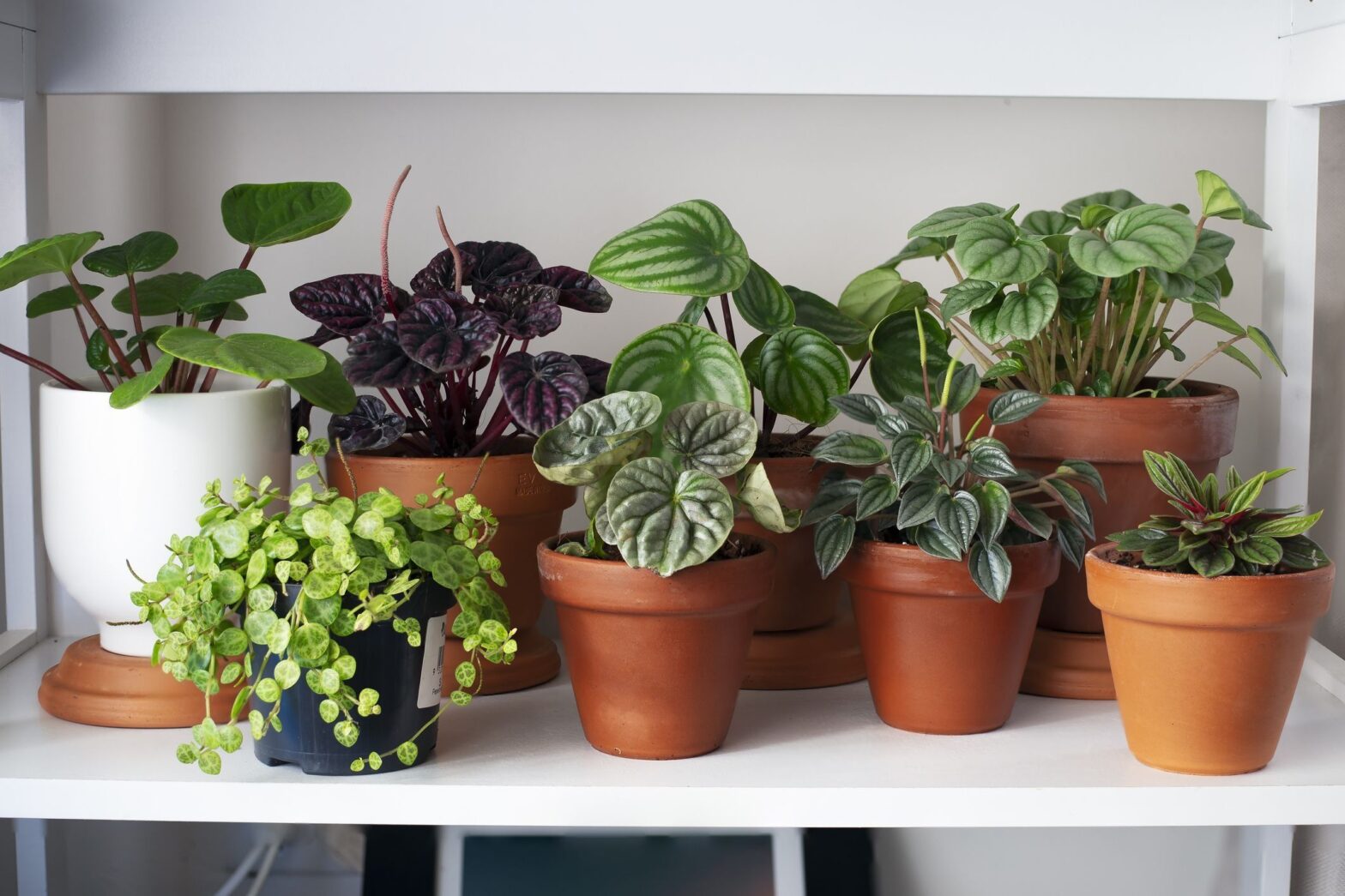Having plants at your home is a great way to bring a piece of nature to your space and liven it up. But if you don’t have much experience in gardening, you might feel overwhelmed about where to start and what is the right plant for your place.
If that’s the case, worry not, as in this guide, we will explore some of the best houseplants for beginners and help you on the road to developing a green thumb. So, keep reading and get ready to start your journey into the wonderful world of gardening.
Whale Fin Sansevieria
It is easy to care for any plant in the Sansevieria species, as these houseplants are resilient and able to adapt to any kind of climate or situation. Since the Whale Fin Sansevieria is hard to find, the Snake Plant Sansevieria is also a good alternative. You can find it in almost any store, and it shares very similar characteristics with the Whale Fin Sansevieria.
These plants don’t require a lot of water which makes them an excellent choice for beginners. Their leaves are thick, almost like those of a succulent, and they retain moisture well, so they don’t need to be watered often. Water them when the soil is completely dry, and wait another week or even two before you do it again.
Another reason why a Whale Fin Sansevieria is a beginner-friendly houseplant is because it can handle any kind of light. So, if you haven’t much experience and you’re not sure what to pick up, consider choosing a Whale Fin or a Snake Plant. Fast growers and unpretentious about water and light, these Sansevieria plants would be an ideal option for you.
Scindaptsus Pictus (Silver Philodendron)
Scindapsus pictus is one of the easiest houseplants to grow and can survive almost any hardship you put it through. Evergreen tropical vine, the plant isn’t cold-tolerant and, in most cases, is grown indoors.
When it’s thirsty, its leaves curl slightly inwards so you can see that it’s time to water it. However, avoid overwatering as it leads to root rot. Let the top inch of the soil dry out between waterings. To check the moisture, poke your finger into the soil – if it’s dry, it’s time to water your plant. Soak thoroughly with room-temperature water until it exits the drainage hole.
Scindapsus pictus prefers bright, indirect light. In direct sunlight, its leaves lose their variegation and become scorched. That’s why it is best to place it near a north- or east-facing window so that it receives plenty of indirect sunlight.
Peperomia Obtusifolia
The Peperomia Obtusifolia can be found in a wide range of sizes, shapes and colours, depending on the variety. It can survive with very little watering and in low-light conditions, which makes it a good option for a beginner’s houseplant. However, be careful not to water it too much as even the tiniest amount of over-watering can lead to root or stem rot making the plant die quickly.
Most Peperomia plants prefer indirect medium to bright light, although if the houseplant you pick is more variegated, it’ll need a little more light than a non-variegated one.
Hoya Krimson Princess
Hoya Krimson Princess can be categorised as beautiful and easy to care for, and if treated well, these plants can live for decades. Their thick and waxy leaves retain a lot of water, which is why they are perfect for someone who travels a lot or is a beginner at gardening.
Regarding light preferences, Hoya Krimson Princess thrives in bright and indirect light. Although it can do well in lower light, its growth will be stunted and won’t flower. The plant doesn’t need much water as it stores it in its leaves, so before watering, leave the soil to dry well, and after that, water it thoroughly. If you’re going on vacation, you don’t have to be worried about your Hoya Krimson Princess – just water it well before you leave, and it’ll do fine in the next two weeks. However, during the winter months, the watering should be reduced significantly.

Image: Paraiso Plant Studio
Rubber Trees
A rubber tree plant, also known as Ficus elastica, requires little maintenance, which makes it ideal for beginners. Nevertheless, as with any other plant, the proper balance of light and water is crucial for it to thrive.
This houseplant prefers bright, indirect light, and you should avoid exposing it to direct sunlight as it can scorch the leaves. You can place it near an east-facing window where it will get plenty of filtered sunlight. If the leaves of your Rubber tree start fading, this is a sign that it doesn’t get enough light.
You should water it every one to two weeks during the growing season, leaving the soil to dry between waterings. However, depending on the humidity and light at your property, you can change the frequency. If you notice that the plant’s leaves are pulling down, it’s time to water them, and if they begin dropping, you should reduce the frequency.
String of Hearts
This plant is quite resilient and tolerant and can endure periods of neglect, which makes it an excellent houseplant for inexperienced gardeners. With the right balance of warmth, light and moisture, the String of Hearts grows fast and flourishes.
The plant is a succulent and likes to dry out well between waterings. During the growing season, water it once a week or when the top 2 inches of soil dry out. In the Autumn and Winter, when the houseplant goes dormant, reduce the watering to once every 3 to 4 weeks.
The String of Hearts likes bright and indirect light, but its leaves can get scorched if exposed to too much sunlight. So, to ensure your plant grows and flourishes put it in a place where it will get enough bright but filtered sunlight.
Money Tree
Money Tree is a super low-maintenance plant that’s also beautiful and fast-growing.
It does well in a lot of indirect light, but it doesn’t like a lot of bright and hot sunlight. Water the plant every one to two weeks or when the top two inches of soil dry. Based on the conditions at your home, you may have to change the watering frequency.
Money Trees are very expressive about how they feel and what they want, so you’ll know on time if something is wrong and you need to change their setting or water them.
Chinese Evergreens
Chinese Evergreens are an excellent choice for everyone who is looking for a low-maintenance, visually appealing, and air-purifying houseplant. It can remove harmful chemicals such as benzene, formaldehyde, and trichloroethylene from the air, which makes it a great choice for improving indoor air quality.
The plant doesn’t require frequent watering. Water it once every two weeks, and it’ll do just fine. As for the light – Chinese Evergreen prefers indirect sunlight, so a place near a window with filtered light would be ideal for it.
Conclusion
Not all of us are gardening experts, so don’t let the lack of experience deter you. There is a wide variety of houseplants for beginners, so even those without gardening experience can find suitable plants and develop a green thumb.
Getting beginner-friendly houseplants can be the starting point for you to learn and move towards more demanding varieties. With proper care and attention to the needs of your plants, soon, you’ll be ready to tackle more challenging ones and turn your home into a green oasis.





